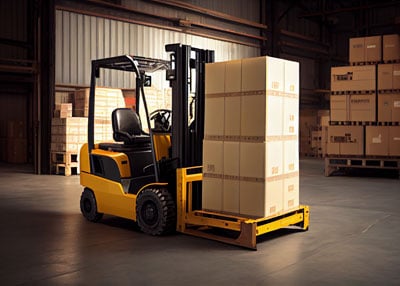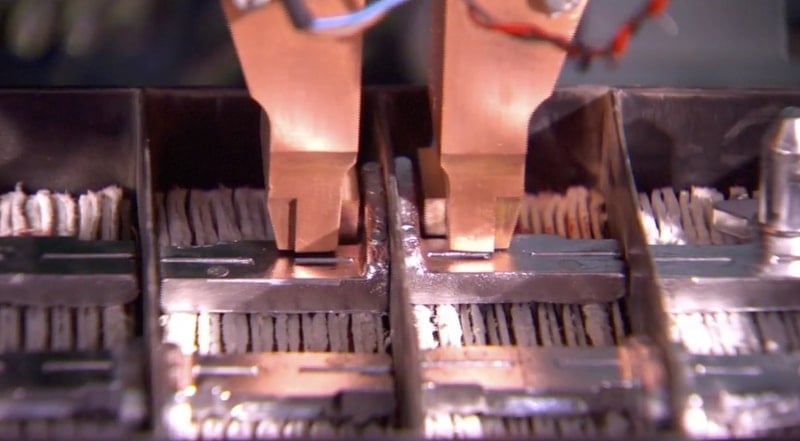Batteries are in our living and working spaces – so these safety tips are crucial to avoid accidents and fires.
Renewable energy batteries power our homes, businesses, hospitals, and cities.
Whether you’re a battery technician, installer, distributor, system designer, or homeowner -- understanding and implementing battery safety measures is vital.
Fortunately, you can safeguard yourself against these hazards with a few easy steps – and enhance your batteries’ efficiency and lifespan.
In this post, you’ll discover:
- The SDS Formula that simplifies prevent maintenance
- Charging habits that maximize batteries’ years of operation (and avoid common causes of early battery failure)
- Advanced cooling tips to prevent overheating your batteries
- Simple steps that prepare you for battery emergencies
- How to catch battery problems early (no matter what batteries you use)
1. Routine maintenance and inspection
Even absorbent gel mat (AGM) and lithium-ion (Li-ion) batteries need routine maintenance and inspection.
Routine checks help identify potential issues before they become serious. Your battery manufacturer's manual will offer specific maintenance and inspection recommendations.
But while your manual will tell you what to do, it might be short on details that make maintenance easier.
For effective maintenance: Simplify, Document, and Schedule it (SDS).
- If your manual doesn’t already include one, create a maintenance checklist. This should only take a few minutes, including inspecting cables for tightness and signs of wear, cleaning battery terminals, and checking water levels in lead-acid batteries.
- If you are using flooded lead-acid batteries, it is important to record the voltage of each cell and keep track of the fluid levels regularly.
- Automate maintenance scheduling by setting reminders in a digital calendar like Google or Outlook. You can set recurring events to whatever interval your manufacturer recommends, which may vary from weekly to once every month or two.
2. Best practices for charging (and sizing)
With your maintenance routine set, it’s time to focus on how you charge your batteries.
Proper charging maximizes battery life and safety. Work with your installer or the manufacturer to ensure battery charging profiles are correctly set – it’s quick and easy, and you’ll avoid early failure, unnecessary replacement, and potential safety risks.
Use a battery analyzer to periodically check your battery's voltage and internal resistance on the recommended schedule. This ensures batteries are not undercharged or overcharged.
Correct Depth of Discharge (DoD) and sizing for low renewable energy production days are also critical.
Size battery systems for a maximum of 50% DoD (aka 50% of energy in a battery is left) to provide a safety buffer for increased electrical demand or reduced renewable energy production. Proper sizing mitigates over-discharging, which can compromise battery lifespan and reliability.
3. Store batteries safely
Storage conditions greatly affect battery life, and temperature regulation and ventilation are essential.
Optimal temperature: Batteries work best when it isn’t hot or cold, between 59 and 95°F (15 and 35°C).
For Li-ion batteries, extreme heat can lead to thermal runaway (uncontrollable self-heating) and fires or explosions.
Lead-acid and AGM batteries are much safer than Lithium-ion batteries at high temperatures but still pose limited risks.
Store batteries in controlled environments at about 77°F (25°C) for optimal safety and longevity.
Proper battery bank insulation is vital. By insulating your battery box or storage area, you slow the transfer of temperature and smooth out temperature ranges inside your batteries,
Passive cooling/heating can also help, depending on your location. You may also need fans for air circulation and insulation to stabilize temperatures, prevent overheating, and ensure safe operating temperatures.
Ensure proper ventilation per manufacturers’ recommendations: The National Electric Code (NEC) outlines specific requirements for battery storage, including adequate ventilation and temperature control. For an overview of several relevant NEC requirements, visit https://thenecwiki.com/2021/02/article-480/.
Always check your battery manufacturer's manual for specific storage recommendations.
For lithium-ion batteries, residential and commercial fires are increasingly frequent. Consider installing lithium-ion batteries in protective cabinets like Fisacon’s fire-rated systems for charging and storing. (Note: Crown Battery has no affiliation with the company.)
Due diligence: Always work with a qualified electrician to meet your project's grounding, arc fault, and disconnecting means requirements.
4. Emergency Preparedness
Properly rated fire extinguishers (and, sometimes, water suppression systems) are critical, as are interconnected smoke detectors communicating with each other.
Always have a written plan for fires, including how to evacuate, whether for your home or a larger-scale renewable energy installation. (For help with a home fire escape plan, see Ready.gov’s in-depth fire escape article.)
5. Battery Management Systems (BMS) boost safety and give you early warning
BMS helps monitor how your battery bank is performing, especially in remote locations or vacation homes. How it works: BMS reads information from your batteries and surroundings – helping you identify and fix problems sooner and easier. Some systems even allow for remote technical support.
For these reasons, BMS can help increase safety and battery longevity – and save you time and money. Your distributor or manufacturer can walk you through BMS benefits and help you determine whether it’s right for you.
What’s next?
Following these tips will ensure your batteries continue to power your home or business safely and efficiently.
And for a done-for-you guide to improving battery system safety: Get your copy of Crown’s complimentary "Safety First" guide now.











